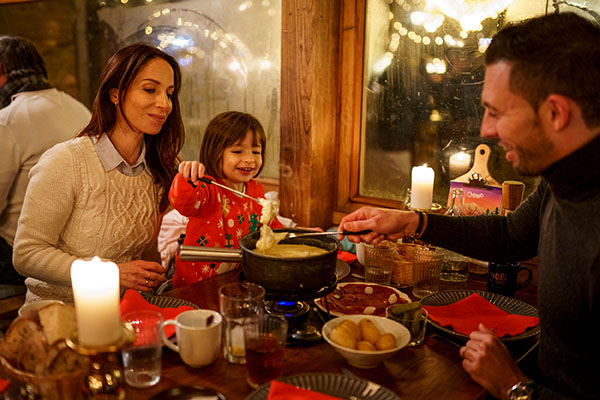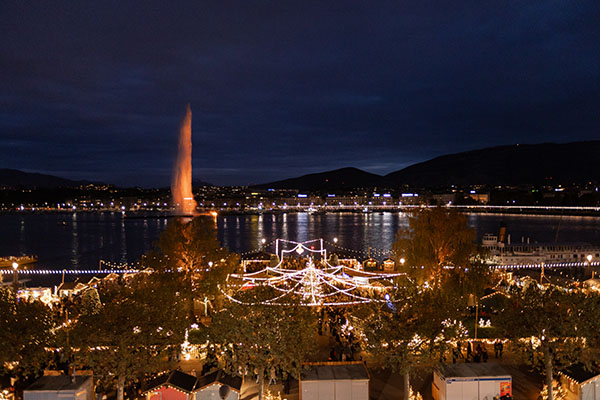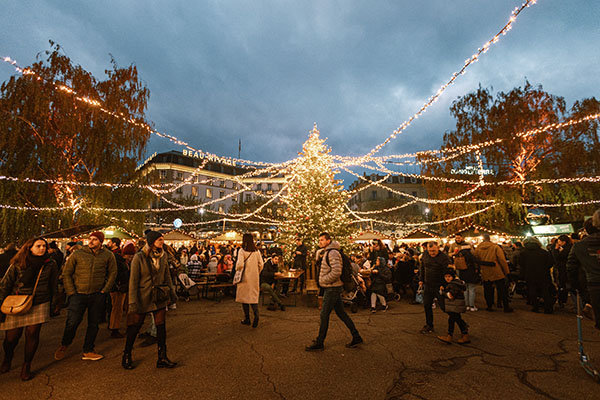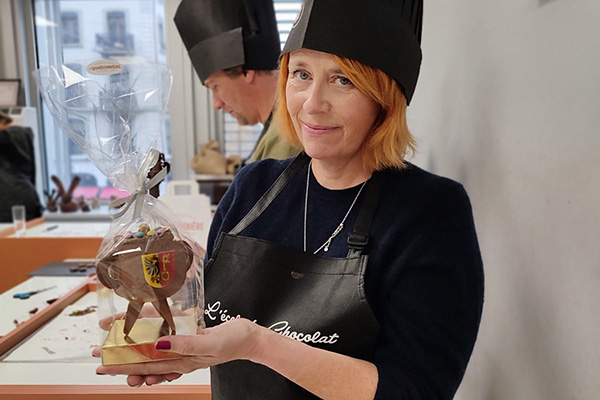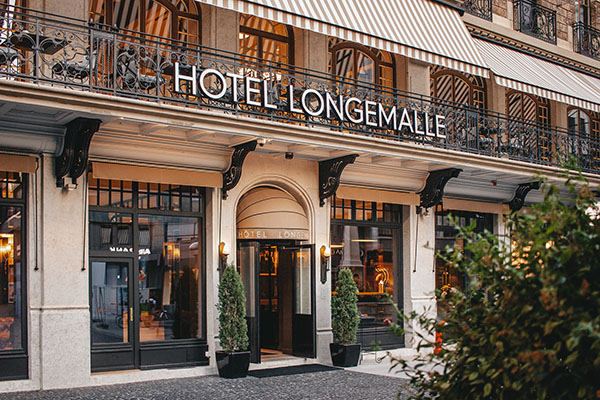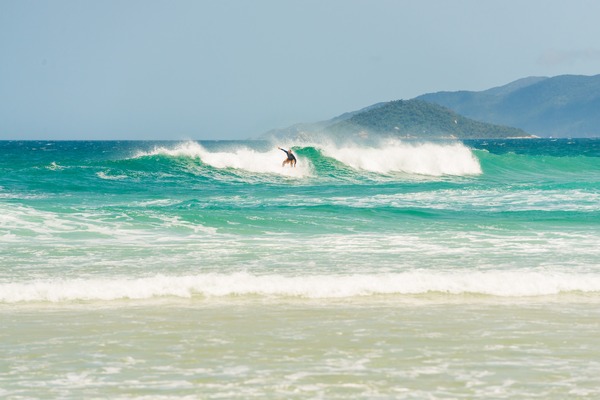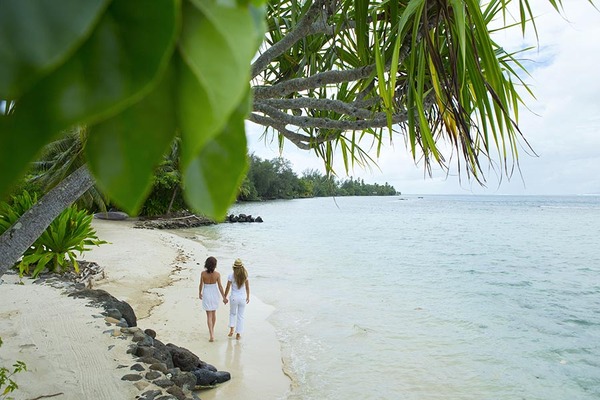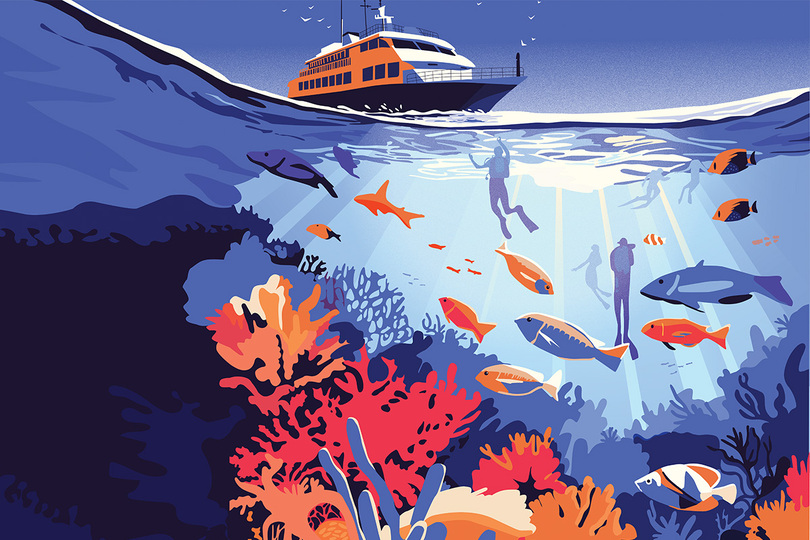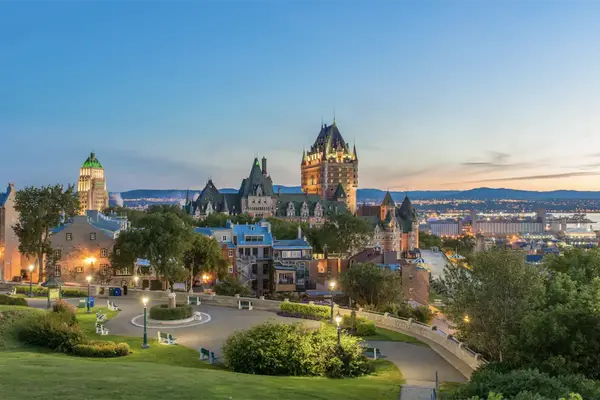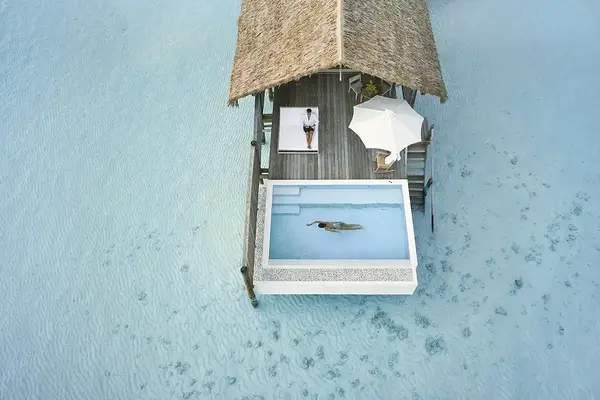Why Geneva will jingle your clients’ bells this Christmas
The Swiss city will turn the Grinchiest Grinch into a fan of all things festive, as our writer discovered on a recent visit.
Over the years, my love for the Yuletide period has wilted, a little like the branches of a Christmas tree past its prime. Yet I’ve longed for that magical, childlike feeling of wonder to return, so the invite to spend three days in Geneva in early December – promising Christmas markets, shopping and festive feasts – felt like Santa Claus himself was giving me a nudge.
Of course, Geneva, Switzerland’s second-biggest city after Zurich – capital city Bern ranks as the fourth largest – is perhaps best known as the world’s watchmaking king. The two titans of luxury watches, Rolex and Patek Philippe, have their headquarters and production facilities here, with the latter opening a four-floor museum in 2001 for those obsessed with all things horological. Geneva is also the seat of the United Nations and home to the international business community, so its Christmas offering is probably not top of mind for many travel agents.
We flew from Gatwick with easyJet and with a flight time of around 1 hour 20 minutes, it felt like we’d barely taken off before we touched down. The stress-free journey (and let’s face it, everyone wants that in the frantic build-up to Christmas) continued by hopping onto a train for a seven-minute transit – Europe’s shortest airport ride – into the heart of Geneva. Our Geneva City Pass made it even easier. Prices start at approximately £25 for a 24-hour pass, with up to 72 hours available, and include free public transport, entrance to museums and other tourist attractions and further discounts at selected venues and activities.
Set on the banks of Lake Geneva’s glistening waters and encircled by the snow-capped Jura mountains, the city is also appealing as a weekend getaway because of its compact size. At just under 16-square-kilometres – roughly one-hundredth the area of London – it is perfect for exploring on foot, and Geneva’s pristine upkeep makes it a further pleasure. (Although I was relieved to have packed trainers to navigate the steeper cobbled streets in the city’s medieval neighbourhood).
After checking into the four-star Hotel Longmalle (see need to know, below), we strolled past the city’s famous landmark, the Jet d’Eau. The water fountain was originally built in 1886 to release excess pressure from a nearby hydraulic plant and was subsequently moved into the centre of the lake to symbolise the strength, vitality and ambition of Geneva and Switzerland as a whole. Today, it makes for a striking sight as one of the world’s highest fountains, spuming to a lofty 140 metres in the air.
Close by, we made our first festive stop at the Noel du Quai, one of Geneva’s most popular Christmas markets. Now in its fifth season, we were met with a scene straight from a nostalgic greeting card, with cute Alpine-style chalets selling everything from alpaca knitwear to handmade jewellery and spiced mulled wine. Excitable children clambered on the brightly-coloured horses of the carnivalesque carousel, and groups of tourists patiently waited their turn to take selfies in the traditional Santa sleigh (though the big man was busy elsewhere).
We’d worked up quite an appetite and followed our noses to one of the highlights of the market, the Chalet a Fondue. It was a Friday lunchtime, and the place was packed with tourists and co-workers having their Christmas parties. We sat on long benches lined with cosy sheepskins, spearing pieces of crusty bread, pickles, sliced potato and charcuterie on long three-pronged forks and dipping them into a bubbling pot of delicious Swiss fondue. Perhaps it was the communal camaraderie and the several glasses of (excellent) Genevan white wine I drank, but I could feel the first stirrings of festive cheer.
Luckily for tipsy tourists, Lake Geneva provides an easy way to get your bearings when navigating the city. When looking down towards it, you’ve got the right bank – rive droite to the French-speaking locals – where one of city’s most beautiful parks, the Perle du Lac, is located, alongside the historic Palais des Nations, the imposing Art-Deco style building that houses the United Nations. A clutch of five-star hotels is also there, such as The Ritz-Carlton Hotel de la Paix, the Four Seasons Hotel des Bergues and the Mandarin Oriental, which first opened its doors in 1950 as Hotel du Rhone, the first hotel to be built in Europe after the Second World War.
Over on the left bank, where we spent the majority of our time, is the main shopping district to flag up to retail-therapy-mad clients. Rue du Rhone is lined with luxury designer brands including Prada, Hermes, Channel and Gucci. With a more limited budget for Christmas presents, I headed to Globus, Switzerland’s version of Selfridges. The department store’s food hall was particularly festive, with throngs of shoppers perusing the Jenga-style towers of panettone in every flavour and shelves stacked high with every type of chocolate known to humans. A tip to share with clients is that the majority of retailers shut up shop on Sundays, even in the run-up to the big day.
And speaking of chocolate, a trip to Geneva wouldn’t be complete without finding out more about the city’s links to the sweet stuff. Recognising the interest in Switzerland’s chocolate-making prowess, Geneva Tourism introduced a ‘Choco Pass’ in 2022, which for a one-off cost of £25 for adults and £5 for children, allows you to visit and sample the wares of some of the city’s most respected chocolatiers in 24 hours.
We delved even deeper during a two-hour chocolate workshop held at La Bonbonniere, a 102-year-old institution situated on Rue-Pierre Fatio. Pulling on chef-style hats and aprons, we joined fellow cacao fans of every age to learn about the chocolate-making process – the Swiss each eat about 32kg of the stuff every year – and to make a "Marmite de l’Escalade", a chocolate cauldron made in celebration of the city’s historic defence against the Savoyard army in 1602 (see five things to recommend, below). Legend has it that Mere Royaume, a quick-thinking Genevan woman, poured a pot of boiling-hot soup over the ramparts onto a group of invaders, killing one of them and alerting the medieval city to the surprise attack. We shaped marzipan into carrots, tomatoes and cheese to commemorate this and popped them into our marmites.
It was another lovely communal experience, and as we placed our cute cauldrons in clear presentation boxes and decorated them with gaily-hued festive ribbons, I realised a small Christmas miracle had happened. Just like Dr Seuss’s famous Grinch, whose heart grows three sizes when he is finally touched by the festive spirit, my love for all things Christmassy had returned.
Five things to recommend in Geneva
• A guided tour of the old city via Geneva Tourism. Our visit coincided with the build-up to the Fete de L’Escalade, which marks the events of 11 December 1602 when the city defended itself against the Savoyard threat and knowledgeable guide Antoinette brought the story to vivid life during a walking tour of the old medieval quarter, geneve.com
• A visit to the Patek Philippe Museum. Considered one of the world’s foremost horology museums, it maps the history of luxury watchmaking from the 16th century to the present day. Admission is included in the Geneva City Pass and note that the museum is closed on Sundays, Mondays and national holidays, patek.com
• Recuperation and relaxation at Bain-Bleu Geneve Plage. This modern urban hammam and spa is the perfect place to soothe tired muscles after all of that sightseeing. It features therapy pools, hammam rooms and top-notch massage therapists, plus a rooftop pool and bar. Remind clients that there is a no-swimsuit policy in some areas, although you are given a special towel for modesty, bain-bleu.ch
• Explore the city’s green spaces. Geneva packs in more than 60 public parks and green areas across 20% of its area, making it an ideal springtime destination too.
• Book a table at Balila. Housed in Hotel Longemalle, this destination restaurant is hugely popular and often booked out months ahead. Featuring fine Lebanese-French fusion food by renowned Lebanese chef Hussein Hadid, a discovery menu with three hot and three cold mezze dishes costs approximately £50 per person, longemallecollection.com
Need to know
Rachel stayed at the four-star Hotel Langmalle, a family-owned luxury boutique hotel featuring 54 rooms. Lead-in prices start from £272 for a classic room, including breakfast. Look out for the Tried and Tested review in the spring edition of TTG Luxury.
